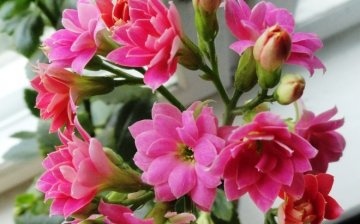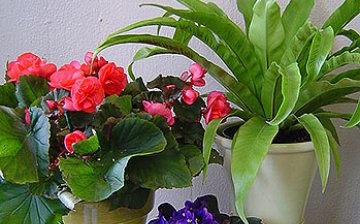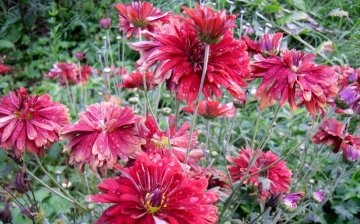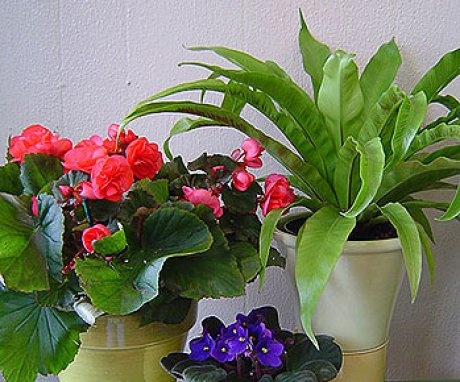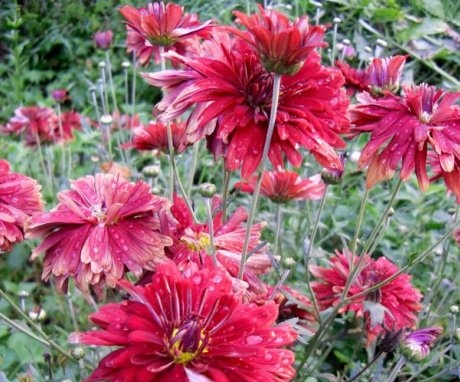Characteristics of short-day plants and proper care for them
Plants of a short day are called representatives of the flora, which bloom during the period when daylight hours last no more than 12 hours. These are plants native to the tropics and subtropics. These include Kalanchoe, chrysanthemums, zygocactus, cornflower, gladiolus, pansies, etc.
Content:
Features of short-day plants
Plants that come from the tropics and subtropics to the middle latitudes are accustomed to such daylight hours, which is equal to night. When they move to middle latitudes, where daylight hours are often much longer than night, they begin to behave completely differently. For example, these representatives of the flora bloom only with a short daylight hours.
Characteristics of short day plants:
- Such plants bloom mainly in autumn or winter, when the night is longer than the day and artificial lighting is used indoors.
- The development cycle of these representatives of the fauna occurs on a short daylight hours.
- Most often, these plants bloom in the fall.
- In order for them to start blooming in summer, it is necessary to significantly reduce daylight hours.
- Most plants in this category, which bloom in the second half of summer, react to the length of daylight hours.
- A decrease in temperature has absolutely no effect on their flowering.
In the event that these representatives of the fauna are in conditions of long daylight hours, then they can reach sufficiently large sizes before flowering. If such plants are planted very early, then they can not only reach large sizes, but also bloom very weakly, which will not make them attractive.
Transplanting short-day plants should be done in early spring when daylight hours are still short. Thanks to this, the plant will take root most successfully.
Plants with short daylight hours can reproduce by seeds, cuttings from leaves or roots.
These representatives of the fauna have green foliage. Despite the fact that they mostly stay in the dark, the process of photosynthesis in them is several times faster than in plants with long daylight hours. They may have flowers of various shapes, which are characterized by a large number of color shades.
Plant care
Plants with short daylight hours are very whimsical to care for. In order for them to fully grow and develop, they need to create conditions in which the night will last 14-16 hours. This action is almost easy, but troublesome. To do this, you need to place plants in the middle of the room and extend the night by closing the curtains. But this may be absolutely not enough for the flowers to stop blooming.
Features of plant care:
- In order for flowering to begin, it is necessary to perform certain actions for three months. After that, the pots of flowers can be put in a permanent place, but during the flowering period, these actions must be strictly followed. To do this, it is necessary to take the plant daily into a dark pantry in the early evening before sunset. It is necessary to bring back the plants in the early morning.
- If you do not have a pantry, then you can put on an opaque bag or cardboard box on the pot in the evening.It is necessary to remove the box or bag in the early morning. In this case, the plant must be protected from the effects of natural light.
- It is best for these representatives of the fauna to use lighting with fluorescent lamps, but at the same time the duration of daylight hours should not exceed 9-10 hours.
In case if there is no frost on the street, you can put such plants on the balcony or take out into the street before the first buds appear. As soon as buds appear on it, it must be brought into the room. During this period, it is necessary to not only protect a representative of the fauna from daylight hours, but also completely protect it from the effects of even artificial light.
In order for short-day plants to fully and long-term bloom, they need to provide:
- Optimal daylight hours.
- Correct temperature.
- Abundant watering.
Plants with short daylight hours need to ensure not only short daylight hours, but also proper watering, as well as optimal temperature.
These plants do not like coolness, so they need to provide a warm indoor climate. In no case should you take them outside if there is a threat of frost. These representatives of the fauna may not survive the frost and die.
This type of plant does not like waterlogged soil, which requires providing them with rational watering.
It is necessary to water them as needed when the soil is completely dry. If the soil is often excessively waterlogged, this can lead to plant diseases and their death. Providing optimal conditions for the development of these plants, you can achieve high-quality and beautiful flowering.
More information can be found in the video.



